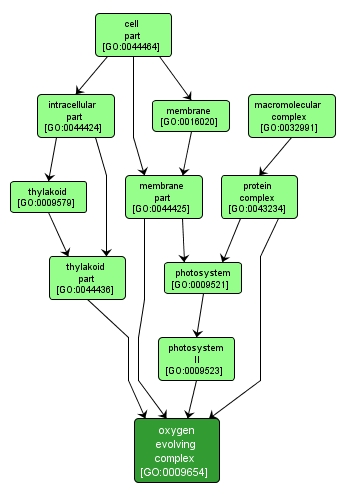| Desc: |
A complex, composed of a cluster of manganese, calcium and chloride ions bound to extrinsic proteins, that catalyzes the splitting of water to O2 and 4 H+. In cyanobacteria there are five extrinsic proteins in OEC (PsbO, PsbP-like, PsbQ-like, PsbU and PsbV), while in plants there are only three (PsbO, PsbP and PsbQ). |














